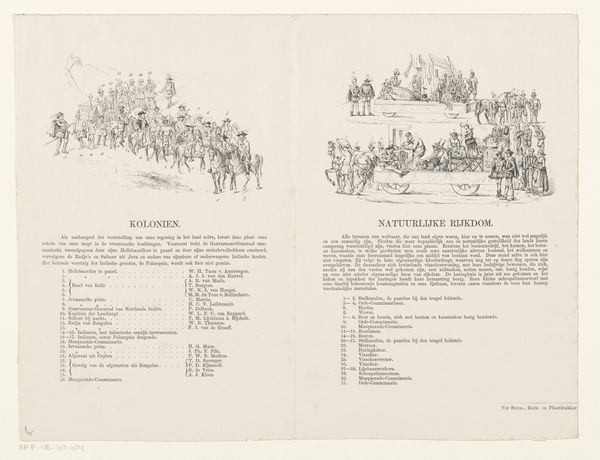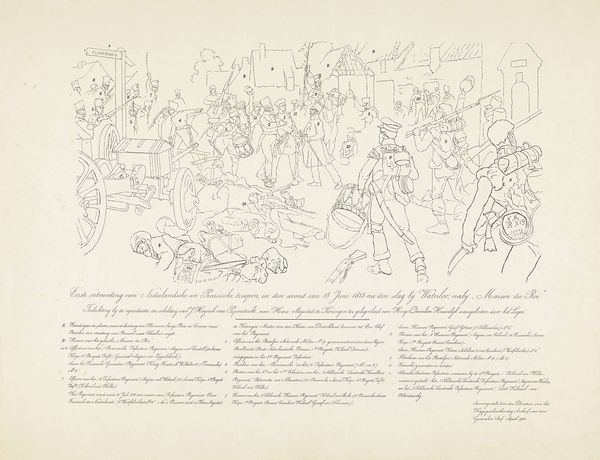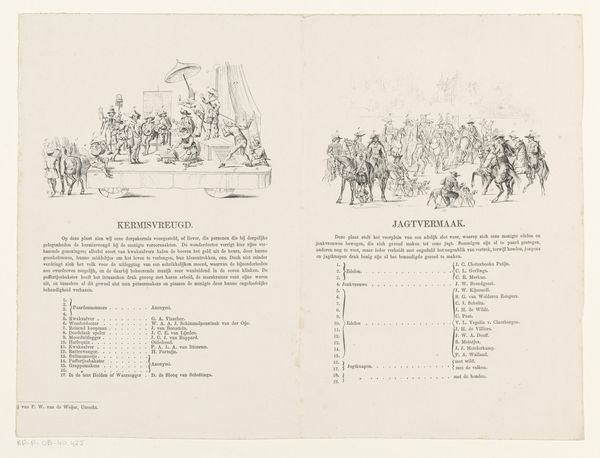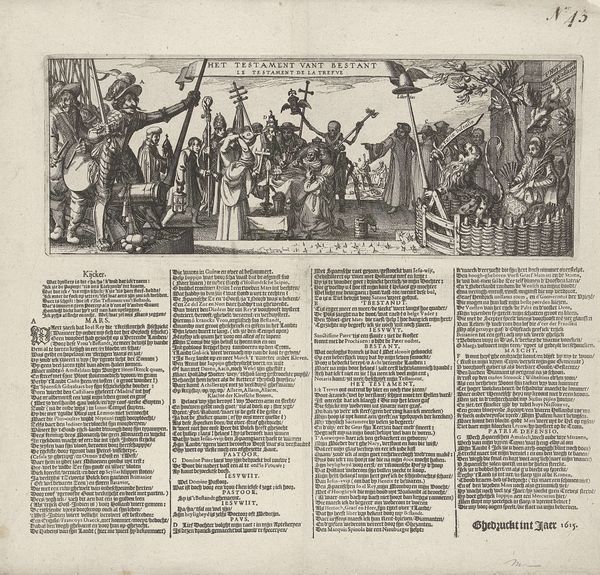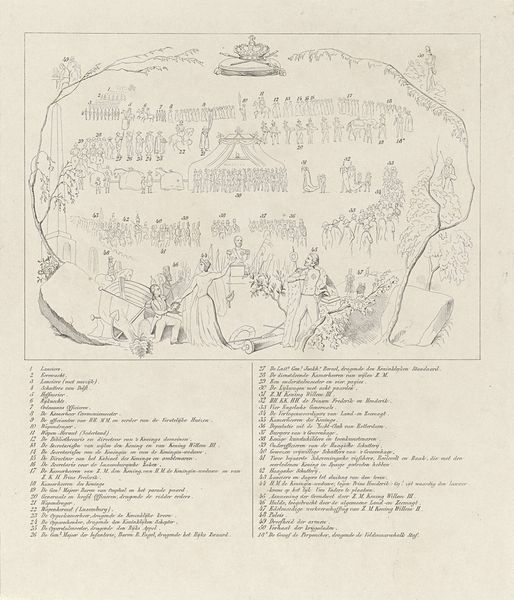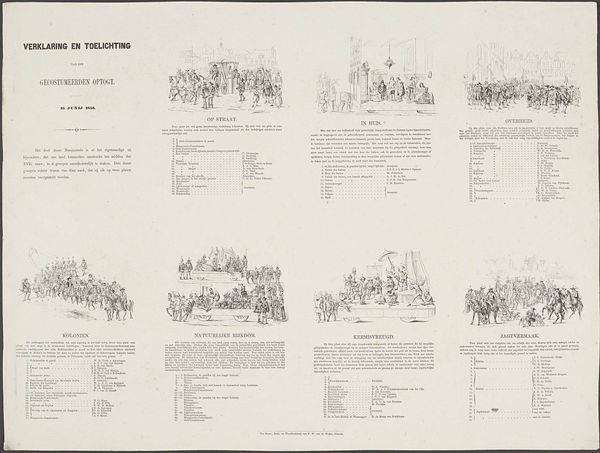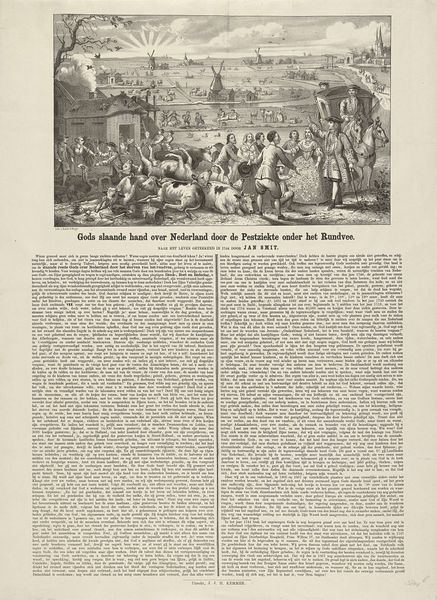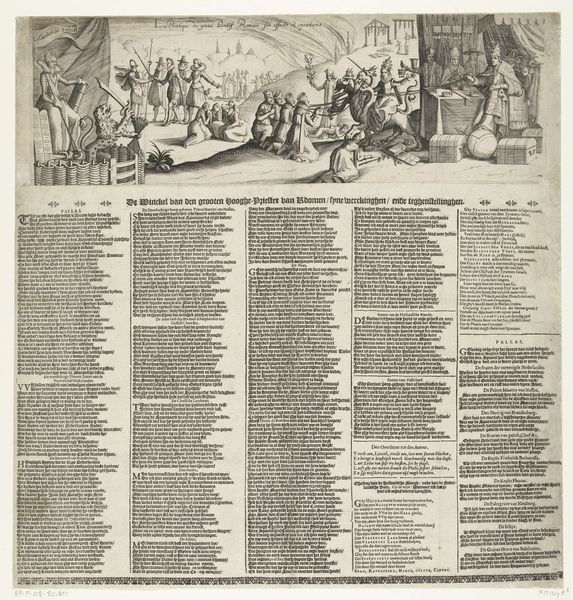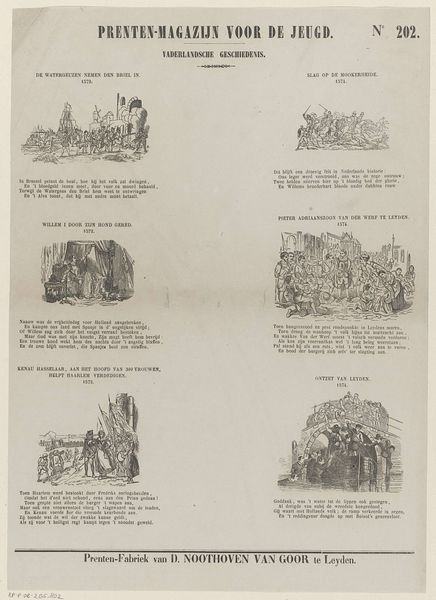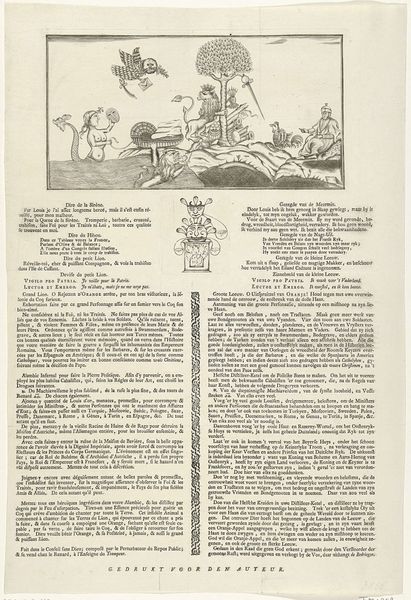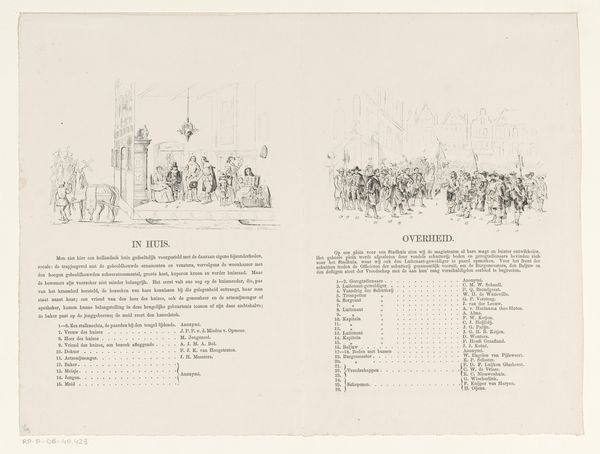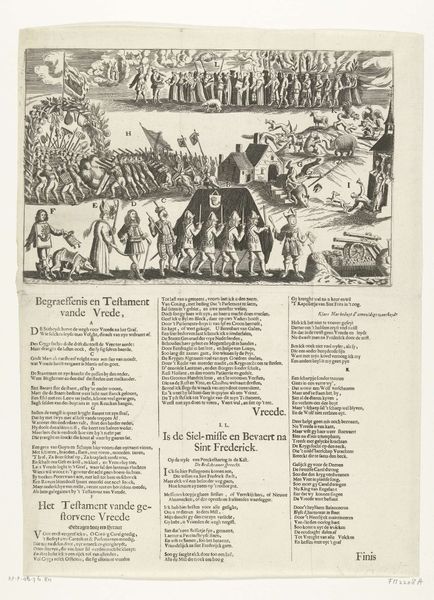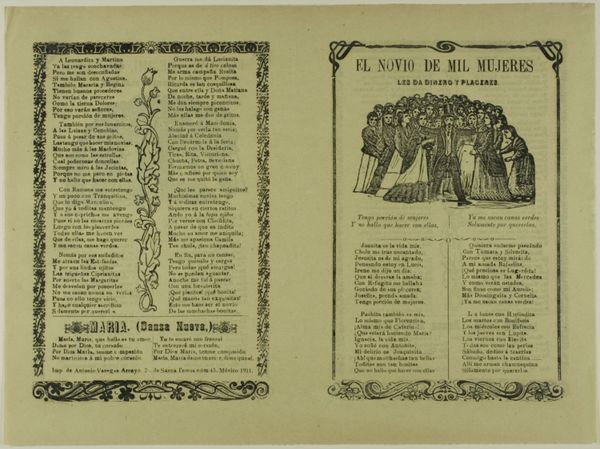
Dimensions: height 461 mm, width 590 mm
Copyright: Rijks Museum: Open Domain
Curator: This drawing, titled "Sleutel bij het schilderij van de Slag bij Waterloo," dates back to 1903 and is attributed to François de Bas. It seems to be an engraving. Editor: Immediately, the sheer density of information strikes me. It’s a very active scene depicted in very fine lines and then accompanied by… reams of text? It feels overwhelming. Curator: Indeed. Think of it as a key, or legenda. The artist uses the scene above—a romantic depiction of the battle—as a backdrop to identify the key figures listed below. The effect of seeing the battle this way creates almost an "illuminated" document—tying visual understanding of figures within history, where, over time, text solidifies narratives in popular culture. Editor: I’m curious about the choice to revisit the Battle of Waterloo so many years after the fact. The painting of it had become so entrenched in narratives about military might and empire… Curator: Right. The Battle of Waterloo quickly took on a mythological quality, even within a single generation. There are visual precedents going back to ancient Roman victory monuments which often use the same imagery, so by the late 19th century, many people are still building from these artistic strategies to convey power. Editor: And by identifying individuals by name here, does the work contribute to a narrative of collective or individual heroism? Or, conversely, given our changed perspectives on military campaigns, could this be seen now as a complicated memorial? Curator: Well, visual representations of battles have served very specific functions across centuries and civilizations. Before photography, certainly, they were a primary means of cementing collective memory and creating symbols around historical events. So by presenting this both as an overview scene and a keyed cast of characters, the piece blends reportage with something much more emotional. Editor: So, it sounds like the layers of meaning here build through both visual and textual symbolism that work to capture something lasting. I find that tension very evocative. Curator: I agree completely. What feels unique about this to me, in addition to how much textual information it delivers, is its position at the end of the Victorian Era. A last look backward, a final inventory of values that the upcoming Edwardian world will then start to take apart.
Comments
No comments
Be the first to comment and join the conversation on the ultimate creative platform.
